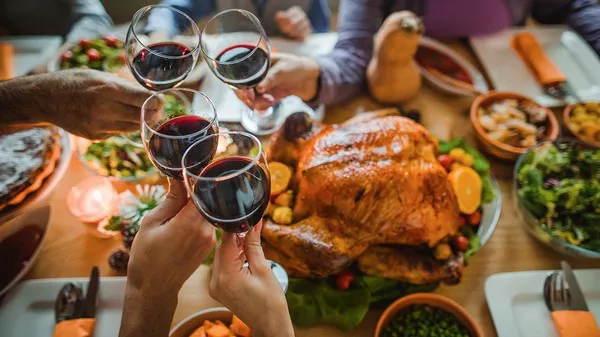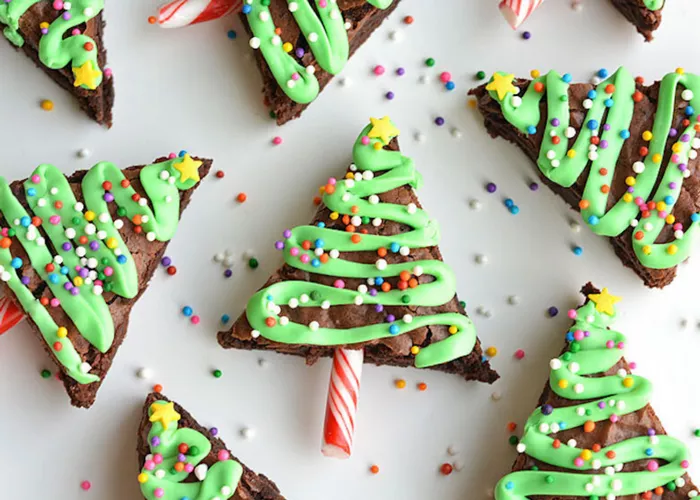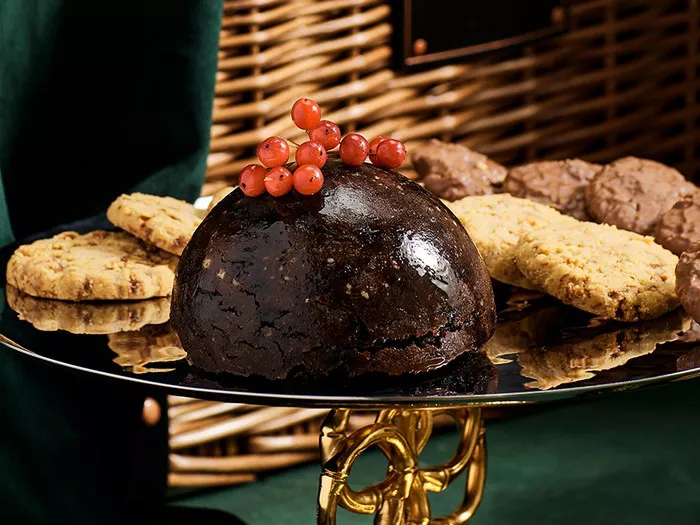China, with its rich cultural heritage and diverse culinary traditions, presents a unique landscape for celebrating global festivities. Christmas, while not a traditional Chinese holiday, has been embraced in various forms, especially in urban centers and among younger generations. This article delves into the food practices surrounding Christmas in China, exploring how traditional Chinese cuisine intertwines with Western influences to create a distinctive festive experience.
The Evolution of Christmas in China
Christmas in China is not a public holiday, but its popularity has grown significantly over the past few decades. This phenomenon can be attributed to globalization, the influence of Western culture, and the commercial appeal of the holiday. Major cities like Beijing, Shanghai, and Guangzhou are adorned with Christmas decorations, and shopping malls become vibrant hubs of festive activities.
Christmas in Urban China: A Fusion of Cultures
In urban areas, Christmas celebrations often mirror Western traditions, with a Chinese twist. Restaurants and hotels offer special Christmas menus, blending Western dishes with local flavors. Chinese families and expatriates alike gather to enjoy festive meals, reflecting the spirit of togetherness and joy.
Western Influences on Christmas Menus
The influence of Western cuisine is evident in the Christmas menus of many Chinese restaurants. Common Western dishes that feature prominently include roasted turkey, glazed ham, and a variety of desserts like Christmas pudding and Yule logs. However, these dishes are often adapted to suit local tastes. For instance, the stuffing for roasted turkey might include Chinese herbs and spices, giving it a unique flavor profile.
Traditional Chinese Dishes During Christmas
While Western dishes are popular, traditional Chinese cuisine remains at the heart of Christmas celebrations in China. Families often prepare elaborate feasts, incorporating regional specialties and seasonal ingredients. Some of the traditional dishes that are commonly enjoyed during Christmas include:
1. Peking Duck: A quintessential Beijing dish, Peking duck is a popular choice for festive meals. The crispy skin and succulent meat, often served with pancakes, hoisin sauce, and scallions, make it a favorite among both locals and visitors.
2. Hot Pot: Particularly popular in northern China, hot pot is a communal meal that embodies the spirit of sharing and togetherness. A simmering pot of broth is placed at the center of the table, and diners cook various ingredients like thinly sliced meats, seafood, vegetables, and tofu at the table.
3. Dumplings: Dumplings, or “jiaozi,” are a staple during many Chinese celebrations. They are often filled with minced meat and vegetables and can be boiled, steamed, or pan-fried. Dumplings symbolize wealth and prosperity, making them a fitting choice for festive occasions.
4. Fish: Serving fish during Christmas symbolizes abundance and prosperity. The Chinese word for fish, “yu,” sounds like the word for surplus, making it a popular dish for ensuring good fortune in the coming year. Fish is typically steamed and served whole with soy sauce, ginger, and scallions.
5. Nian Gao (Glutinous Rice Cake): Nian gao is a sticky rice cake that is traditionally eaten during Chinese New Year but also finds its place in Christmas celebrations. It is believed to bring good luck and prosperity. Nian gao can be sweet or savory and is often pan-fried until crispy on the outside and chewy on the inside.
SEE ALSO:What Do Irish People Eat for Christmas
Regional Variations in Christmas Cuisine
China’s vast and diverse landscape means that Christmas cuisine can vary significantly from one region to another. Each region brings its unique flavors and culinary traditions to the festive table:
1. Cantonese Cuisine: In southern China, particularly in Guangdong province, Cantonese cuisine reigns supreme. During Christmas, families might enjoy dishes like roasted goose, dim sum, and seafood. Cantonese cuisine is known for its freshness and delicate flavors, making it a delightful addition to Christmas celebrations.
2. Sichuan Cuisine: Known for its bold and spicy flavors, Sichuan cuisine adds a fiery twist to Christmas feasts. Popular dishes include mapo tofu (spicy tofu with minced meat), kung pao chicken, and hotpot with a spicy, numbing broth. These dishes provide a warming and exhilarating experience during the winter festivities.
3. Shandong Cuisine: In eastern China, Shandong cuisine features hearty and robust flavors. Braised sea cucumber, sweet and sour carp, and baozi (steamed buns) are common dishes that might grace the Christmas table. Shandong cuisine emphasizes the use of seafood and grains, providing a diverse range of options for festive meals.
Christmas Sweets and Desserts in China
Desserts play an important role in Chinese celebrations, and Christmas is no exception. While Western desserts like cakes and cookies are popular, traditional Chinese sweets also make an appearance:
1. Tangyuan (Glutinous Rice Balls): Tangyuan are sweet rice balls typically filled with sesame paste, red bean paste, or peanut butter. They are served in a warm, sweet broth and are a symbol of reunion and togetherness.
2. Mooncakes: Although traditionally associated with the Mid-Autumn Festival, mooncakes are sometimes enjoyed during Christmas. These dense, filled pastries come in various flavors, including lotus seed paste, red bean, and even modern adaptations like chocolate and coffee.
3. Egg Tarts: A popular Cantonese dessert, egg tarts are similar to custard tarts and are often served during festive occasions. The flaky pastry and creamy, sweet filling make them a delightful treat.
4. Eight Treasures Rice Pudding: This traditional dessert is made with glutinous rice and eight different types of dried fruits and nuts, symbolizing good fortune and prosperity. It is often steamed and served warm, providing a comforting end to a festive meal.
Beverages for Christmas Celebrations
Beverages are an integral part of Christmas celebrations in China. From traditional teas to festive cocktails, there is a wide range of drinks to complement the holiday feast:
1. Tea: Tea is a staple in Chinese culture and is commonly served during Christmas meals. Popular choices include jasmine tea, oolong tea, and pu-erh tea. The warm, soothing qualities of tea make it a perfect accompaniment to festive dishes.
2. Baijiu: Baijiu is a traditional Chinese distilled spirit made from grains like sorghum and rice. It is often enjoyed during celebrations and is known for its strong, bold flavor. Baijiu can be an acquired taste, but it is a popular choice for toasting to good health and happiness.
3. Christmas Cocktails: In urban centers, Western-style Christmas cocktails have gained popularity. Drinks like mulled wine, eggnog, and spiked hot chocolate are often served in bars and restaurants, adding a festive touch to the celebrations.
4. Non-Alcoholic Beverages: For those who prefer non-alcoholic options, traditional Chinese beverages like chrysanthemum tea, plum juice, and soy milk are popular choices. These drinks are refreshing and complement the rich flavors of festive dishes.
Christmas Markets and Street Food
Christmas markets have become a popular attraction in many Chinese cities. These markets offer a wide variety of foods, both Western and Chinese, providing a unique culinary experience. Visitors can enjoy street food like skewered meats, steamed buns, and sweet treats while browsing for Christmas gifts and decorations.
1. Skewers: Known as “chuan,” skewers are a popular street food in China. They come in various forms, including lamb, chicken, seafood, and vegetables, often grilled and seasoned with a spicy or savory sauce.
2. Baozi (Steamed Buns): Steamed buns filled with meat, vegetables, or sweet pastes are a common sight at Christmas markets. They are a convenient and delicious snack for visitors exploring the festive stalls.
3. Candied Hawthorn: A traditional Chinese treat, candied hawthorn (tanghulu) consists of hawthorn berries coated in a hard sugar shell. These sweet and tangy treats are a favorite during winter festivals.
4. Roasted Chestnuts: Roasted chestnuts are a popular winter snack in China. Their sweet, nutty flavor and warm, comforting texture make them a perfect treat for the chilly Christmas season.
The Role of Hospitality and Gifting
Hospitality and gifting are important aspects of Chinese culture, especially during festive occasions like Christmas. Families and friends exchange gifts, and hosts often go to great lengths to prepare elaborate meals for their guests.
1. Gift-Giving: While not as elaborate as during Chinese New Year, gift-giving during Christmas has become more common. Popular gifts include fruit baskets, fine teas, and gourmet treats. It’s also common to give imported chocolates, wines, and other Western delicacies.
2. Hosting Festive Meals: Hosting a Christmas meal is a way for Chinese families to express their hospitality and generosity. The meal is often a multi-course affair, featuring a blend of traditional Chinese dishes and Western favorites. The emphasis is on creating a warm and welcoming atmosphere for guests.
Adapting to Dietary Preferences and Restrictions
As with any global celebration, Christmas meals in China are often adapted to accommodate dietary preferences and restrictions. Vegetarian and vegan options are increasingly available, reflecting a growing awareness of diverse dietary needs.
1. Vegetarian Options: Many traditional Chinese dishes can be easily adapted for vegetarians. For example, hot pot can be made with vegetable broth, and dumplings can be filled with a mix of mushrooms, tofu, and vegetables.
2. Vegan Choices: Vegan options are also becoming more common. Restaurants and home cooks use ingredients like seitan, tempeh, and plant-based milk to create festive dishes that cater to vegan diets.
3. Gluten-Free Alternatives: With the rising awareness of gluten intolerance, gluten-free options are also available. Dishes made with rice, vegetables, and gluten-free soy sauce ensure that everyone can enjoy the festive feast.
Conclusion
Christmas in China is a vibrant and evolving celebration, blending traditional Chinese culinary practices with Western influences. From elaborate feasts featuring Peking duck and hot pot to festive sweets like tangyuan and mooncakes, the food enjoyed during Christmas in China reflects the country’s rich cultural diversity and openness to global traditions.
As China continues to embrace Christmas, the culinary landscape will undoubtedly evolve, offering new and exciting flavors for future celebrations. Whether you find yourself in a bustling city or a quiet village, the spirit of Christmas in China is marked by warmth, hospitality, and a shared love for good food.
Related Topics:
























